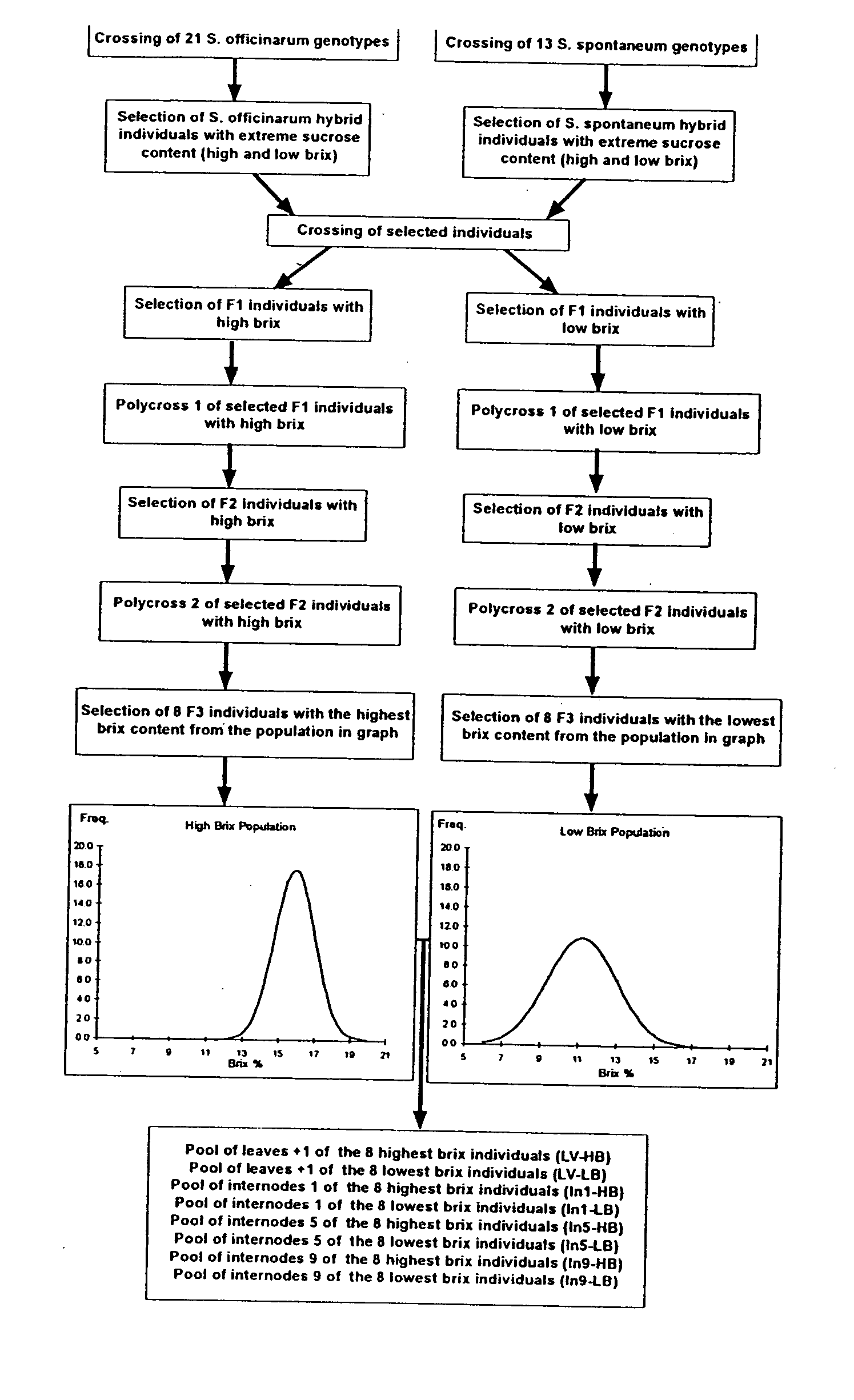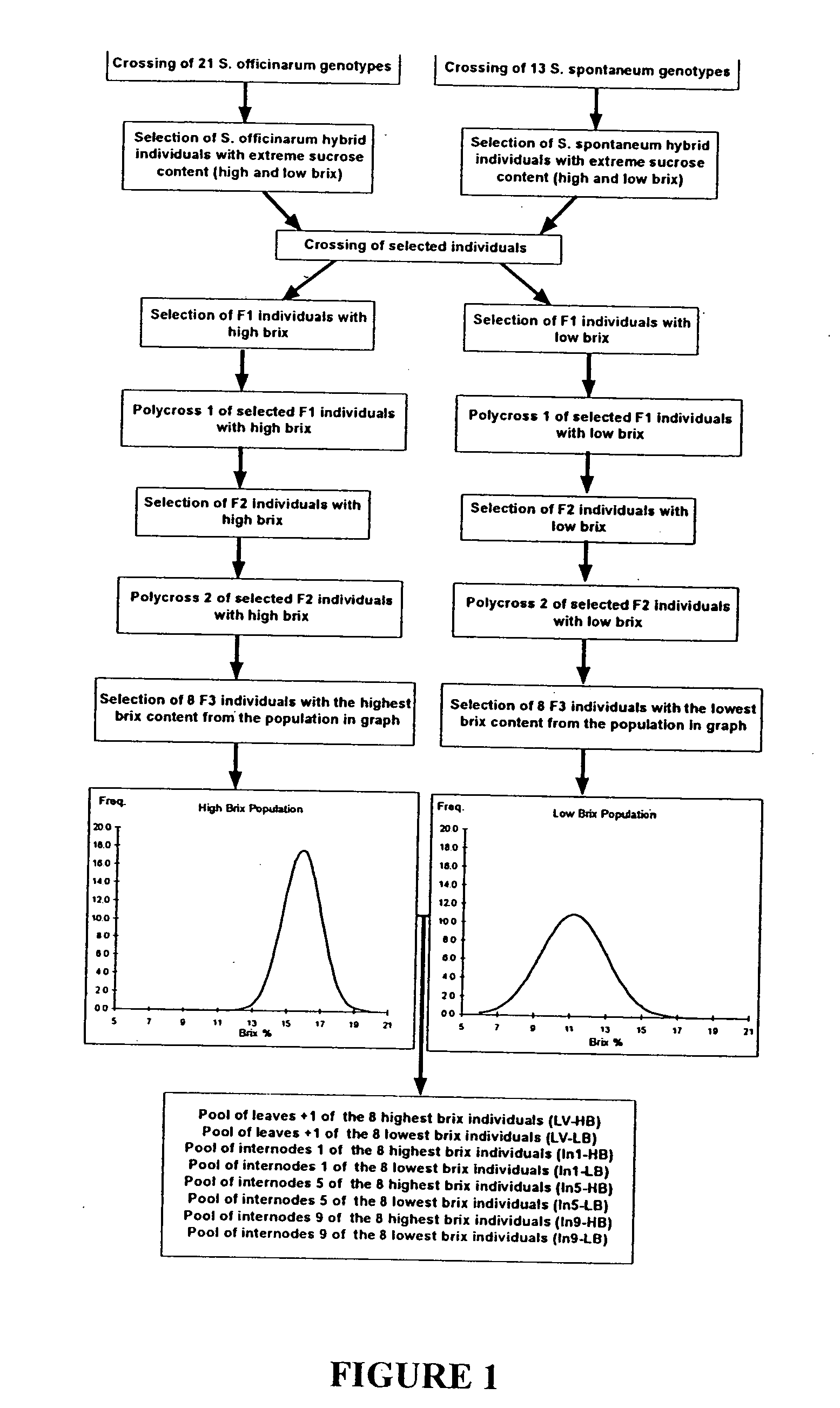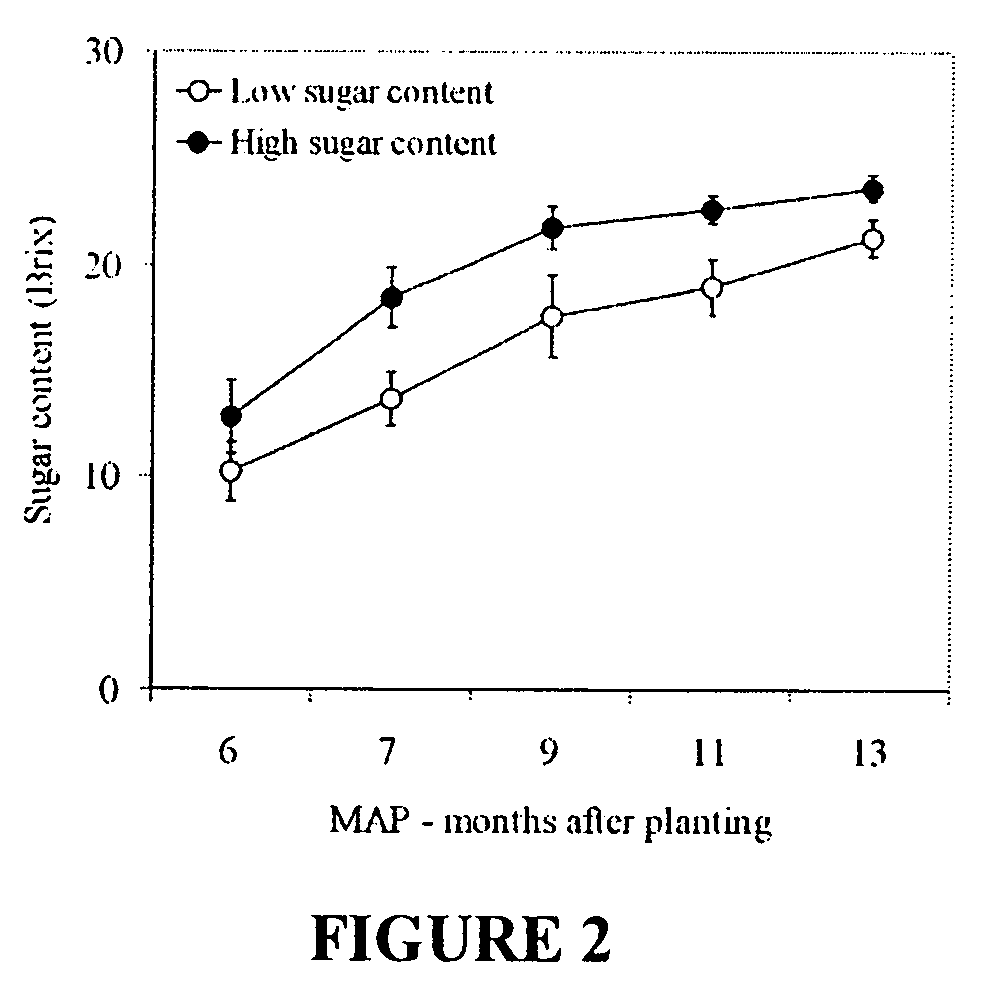Genes associated to sucrose content
a technology of sucrose content and genes, applied in the field of genes associated with sucrose content, can solve the problems of limited improvement of conventional varietals, technology may be reaching a limit in the increase of sugar productivity, etc., and achieve the effects of improving sucrose content, high sucrose content, and increasing plant sucrose conten
- Summary
- Abstract
- Description
- Claims
- Application Information
AI Technical Summary
Benefits of technology
Problems solved by technology
Method used
Image
Examples
Embodiment Construction
[0040] Very little is known on the molecular mechanisms governing sucrose synthesis and accumulation in sugarcane. Although varieties exist capable of accumulating different amounts of sucrose, studies designed to compare these cultivars at the molecular level are scarce. The identification of genes conferring favourable traits to commercial hybrids is highly desirable for the sugarcane industry, since they could be used as markers for assisted selection.
[0041] The present invention broadly relates to defining a gene expression profile for SEQ ID NO. 1-203 that facilitates identification, isolation and characterization of high and low sucrose content sugarcane plants. The present invention also relates to defining a gene expression profile for SEQ ID NO:s 1-203 and SEQ ID NO:s 229-373 that is associated with sucrose content indicating genes that may be useful in the generation of sucrose enriched plants. Gene expression data can be determined for plants that can be a progeny derive...
PUM
 Login to View More
Login to View More Abstract
Description
Claims
Application Information
 Login to View More
Login to View More - R&D
- Intellectual Property
- Life Sciences
- Materials
- Tech Scout
- Unparalleled Data Quality
- Higher Quality Content
- 60% Fewer Hallucinations
Browse by: Latest US Patents, China's latest patents, Technical Efficacy Thesaurus, Application Domain, Technology Topic, Popular Technical Reports.
© 2025 PatSnap. All rights reserved.Legal|Privacy policy|Modern Slavery Act Transparency Statement|Sitemap|About US| Contact US: help@patsnap.com



